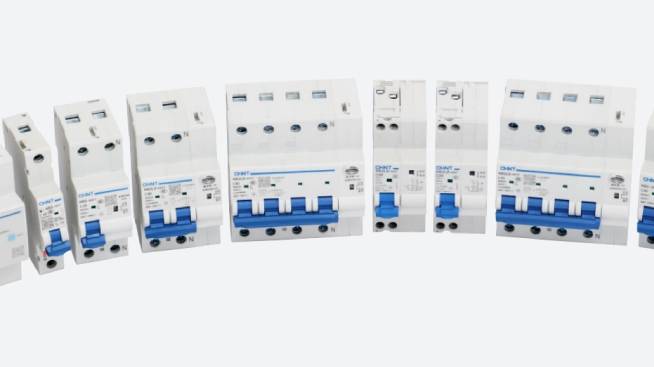Why is my electricity bill so high? The majority of homeowners have received an abnormally high electricity bill at some point. Unfortunately, it is never a pleasant experience, especially if you are on a tight budget. According to EnergyStar, the typical household spends over $2,000 on energy bills yearly.
This article highlights the various reasons why you tend to have an unreasonably high electric bill.
Why is My Electricity Bill So High All of a Sudden?
Below are possible reasons for a startlingly high electric bill.
Old and Less-Efficient Appliances
Old and outdated appliances tend to suck energy which leads to high energy bills. These appliances are often found in rooms less used by homeowners, such as the basement. Some of these old appliances may not be compatible with electricity ratings in your house, which may also lead to sucking up excess electricity.
Inefficient Lightbulbs
The traditional lighting systems often consume lots of power, which silently increases your energy bills. They are not intended to save power, unlike LED bulbs.
LED lights are considered more expensive than regular lightbulbs. However, in the long run, LED lights are highly energy-efficient and will save you lots of money from your electricity bills.
Increasing Electricity Rates
Unfortunately, this tends to be a constant influencing factor when it comes to electricity bills. If your energy supplier increases your energy prices, chances are you will notice a higher energy bill.
In the last decade, the average energy rates have increased approximately 4% yearly, depending on different locations.
Unfortunately, this means that you will still notice high electricity bills even if you rarely or minimally use electricity, depending on your energy supplier.
The best way to determine if this is one of the causes of high electricity bill is to compare your current bill with the last. Compare the unit price or confirm with the energy supplier if there has been an increase in the energy prices.
Extreme Weather
Temperatures and weather are rarely constant across different parts. According to Independent Statistics and Analysis, extreme weathers increase the demand for cooling and heating. As a result, the demand for electricity increases fuel and electricity prices.
When wind speed drops or there is a competing demand for water sources, the loss of electricity production from these sources potentially puts extreme pressure on alternative energy sources. The result is an increase in prices and electric bills.
Leaving Devices on Standby
Leaving unplugged appliances on standby sucks up electricity, increasing your electric bills. These are sometimes identified as “Vampire appliances.” They may include microwaves, garage door openers, and potentially any electric device you forget to plug out of the outlet after use.
How to Discover Hidden Electricity Waste
Other high electric bills causes may include over usage of electricity and inaccurate estimate. Luckily, these and the various other causes of high electricity bills can be discovered and solved without hassle.
One way to discover hidden power waste is by talking to your energy supplier to help you determine the reason for increased energy bills.
You can also install an electricity meter that keeps track of how much electricity you use. Talk to your energy supplier to recommend the best meter system.
The CHINT electricity meter is one of the highly recommended electricity meters that homeowners install to keep track of their electricity usage. It includes single and phase meter, post-paid and pre-paid electricity meters.
To further determine the excess electricity waste, you should consider every appliance in your house, determine their individual electricity usage, and find out which one is overusing electricity.
How to Save on Electricity Bill
Once you have determined the potential causes of the abnormally high electric bill, start finding ways to save on power and reduce your high bills.
Below are expert-recommended ways to save on electricity bills.
Replace Old Light with LED Lights
LED lights reduce energy consumption significantly, thus reducing strain on your electricity bills. Ensure you replace your old bulbs with CHINT LED light to save on electricity. High-quality LED lightbulbs are designed to use up to 90% less energy than regular lightbulbs and tend to last longer.
Reduce Excess Power Usage
Unless extremely busy, minimize using your dishwasher every time. This may seem like a foreign and odd concept among the average American. However, it is a highly effective way to save power. Consider washing dishes by hand.
Other ways to reduce excess power usage include;
- Take shorter showers
- Wash clothes in cold water
- Do your laundry in large loads instead of multiple small loads
Shop Around for Better Prices
Regardless of the standard unit price set for electricity, energy suppliers often have a say in their electric prices. Therefore, if you want to avoid the high electric bills common with your energy supplier, shop around for more favorable prices.
Unplug Vampire Appliances
Remember to unplug appliances when not in use. Each electric appliance uses a small amount of energy even when not in use. To reduce this phantom overload, ensure you unplug devices from outlets when not in use.
Install a Programmable Thermostat
A programmable thermostat allows you to set the standard temperatures, so you don’t have to interfere with it regularly. Most of these intelligent devices can sync with your smartphone, allowing you to monitor and adjust your current house temperature remotely.
Replace Your Old Appliances
Old and unused appliances suck up power. Consider replacing or disposing of these appliances to reduce high electric bills.
Seal Your Doors
Leaving your door open when cooling or heating the interior is an easy way to lose air and waste lots of power. You may also notice some spacing around the door and on the frame that lets in air. Sealing your door translates to using less energy to heat or cool your home during extreme weather.
Conclusion
High electric bills are often a result of negligence. Whether it is extreme weather, old appliances, inefficient lightbulbs, rising prices, or vampire appliances, you can try to manage the situation.
One of the best ways to be ahead is installing the CHINT electricity meter that helps you determine your power usage. Most importantly, ensure you consult with your energy providers if they may have made an error with the electricity bill.
















